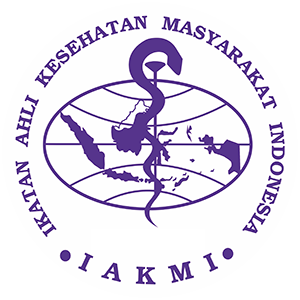“ANAK SEHAT, ANAK GEMBIRA†PAKET EDUKASI KESEHATAN ANAK USIA PRASEKOLAH TK STRADA DEWI SARTIKA III – TANGERANG - BANTEN
DOI:
https://doi.org/10.30787/gemassika.v5i1.589Keywords:
Development, Health Education, Parents, Preschool.Abstract
ABSTRACT
The task of a child's independence in carrying out activities for himself is increasingly developing at preschool age, so parents need to know the development and achievement of children's abilities according to their age. This knowledge is needed so that parents can train children in achieving developmental tasks such as self-care and become a role model for children to practice good health behaviors, one of which is to maintain dental hygiene. The results of this educational package include 2 things. From the child's side, the results of education and demonstration about brushing teeth are that the child is able to mention the frequency and the right time to brush teeth, the impact if irregularly brushing teeth, the right time to replace the old toothbrush with a new one, and be able to show how to brush teeth as has been exemplified before. While in terms of parents, there was an increase in the average knowledge of parents before and after the provision of education by 27.68%. At the end of the activity, the parent participant expressed his desire to begin to recognize the child's developmental achievements according to his age. The conclusion of the health education activities provided is the increased ability of children to information about dental health and the willingness to perform self-care optimally according to their age stages. Furthermore, it is important to hold continuing education to realize the importance of monitoring the development of preschool children which includes language, psychosocial, psychosexual, cognitive, emotional, and spiritual development.
Â
References
REFERENSI
Alkhtib, A. and Morawala, A. (2018) ‘Knowledge, attitudes, and practices of mothers of preschool children about oral health in Qatar: A cross-sectional survey’, Dentistry Journal, 6(4), pp. 6–13. doi: 10.3390/dj6040051.
Amini, M. (2015) ‘Profil Keterlibatan Orang Tua dalam pendidikan anak usia TK’, Jurnal Ilmiah VISI PPTK PAUDNI, 10(1), pp. 9–20. Available at: http://journal.unj.ac.id/jurnalfip/index.php/visi/article/view/7/8.
Finders, J. K. et al. (2016) ‘The impact of parenting education on parent and child behaviors: Moderators by income and ethnicity’, Children and Youth Services Review. Elsevier B.V., 71, pp. 199–209. doi: 10.1016/j.childyouth.2016.11.006.
Hockenberry, M. J., Wilson, D. and Rodgers, C. C. (2016) Wong’s Essentials of Pediatric Nursing. Elsevier (Wong’s Essentials of Pediatric Nursing). Available at: https://books.google.co.id/books?id=30-DjwEACAAJ.
Husna, A. (2016) ‘Peranan Orang Tua dan Perilaku Anak dalam Menyikat Gigi dengan Kejadian Karies Anak’, Jurnal Vokasi Kesehatan, 2(1), pp. 17–23. doi: 10.30602/JVK.V2I1.49.
Keloay, P., Mintjelungan, C. N. and Pangemanan, Damajanty, H. C. (2019) ‘Gambaran teknik menyikat gigi dan indeks plak pada siswa SD GMIM Siloam Tonsealama’, Jurnal e-GiGi, 7(2), pp. 76–80. Available at: https://ejournal.unsrat.ac.id/index.php/egigi/article/view/24143/23827.
Kyle, T. and Carman, S. (2017) Essentials of Pediatric Nursing. Wolters Kluwer. Available at: https://books.google.co.id/books?id=TuNyrgEACAAJ.
Leifer, G. (2014) Introduction to Maternity and Pediatric Nursing - E-Book. Elsevier Health Sciences. Available at: https://books.google.co.id/books?id=T5I3BQAAQBAJ.
Mandleco, B. L. and Mandleco, B. H. (2004) Growth and Development Handbook: Newborn Through Adolescence. Thomson/Delmar Learning. Available at: https://books.google.co.id/books?id=FboM_Szi9doC.
Reca, R. (2018) ‘Hubungan Jenis Makanan Jajanan Dengan Status Karies Pada Murid Sdn Lampeuneurut Aceh Besar’, AVERROUS: Jurnal Kedokteran dan Kesehatan Malikussaleh, 4(2), p. 37. doi: 10.29103/averrous.v4i2.1036.
Worang, T. Y., Pangemanan, D. H. C. and Wicaksono, D. A. (2014) ‘HUBUNGAN TINGKAT PENGETAHUAN ORANG TUA DENGAN’, Jurnal e-GiGi, 2(2), pp. 7–10. Available at: https://ejournal.unsrat.ac.id/index.php/egigi/article/view/5777/5310.












